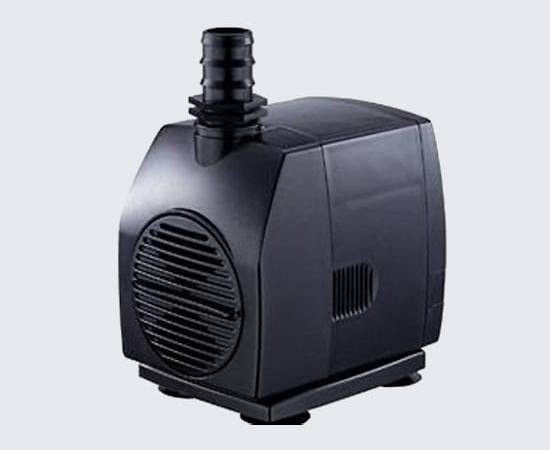Water gardens represent more than simple landscaping elements. They are dynamic ecosystems that breathe life into outdoor spaces, creating serene environments that captivate the senses and provide tranquil retreats. Homeowners increasingly seek water features that blend natural beauty with functional design, understanding the profound impact these installations can have on their landscape’s overall aesthetic and ecological balance.
A perfect fountain for pond requires careful consideration of multiple factors beyond mere visual appeal. Pond owners must evaluate critical aspects such as water circulation, aeration capabilities, and spatial compatibility. The right water feature can dramatically transform an ordinary outdoor space into a vibrant, living landscape that supports robust aquatic ecosystems and provides a stunning visual centerpiece.
The selection of a fountain pump involves intricate decision-making processes that balance technical requirements with aesthetic preferences. Property owners must navigate complex considerations including power sources, installation challenges, and long-term maintenance implications. Understanding these nuanced elements ensures a water feature that not only looks spectacular but functions efficiently and sustainably.
Understanding Pond Water Feature Fundamentals
- Pond Size and Feature Compatibility: Critical Considerations: Selecting an appropriately sized water feature demands precise measurements and careful analysis. Smaller ponds require different fountain configurations compared to expansive water bodies. Homeowners must measure total water surface area, depth variations, and surrounding landscape characteristics to determine the most suitable water feature design.
- Water Circulation and Aeration Principles: Scientific Insights: Effective water features do more than create visual interest. They play crucial roles in maintaining ecological balance by promoting oxygen exchange and preventing stagnation. Proper aeration supports aquatic life, reduces algae growth, and helps maintain consistent water temperatures throughout different pond regions.
- Improves dissolved oxygen levels
- Prevents harmful algae proliferation
- Supports diverse aquatic ecosystems
- Reduces potential mosquito breeding areas
- Enhances overall water quality
Power Source Evaluation
- Electrical Options: Traditional Power Strategies: Electric fountain pumps represent reliable solutions for consistent water feature performance. These systems offer predictable operation with minimal maintenance requirements. Homeowners must consider electrical accessibility, potential installation costs, and long-term energy consumption when selecting electric-powered water features.
- Solar-Powered Alternatives: Sustainable Technology: Emerging solar fountain technologies provide environmentally conscious alternatives to traditional power sources. These innovative systems harness renewable energy, reducing operational costs and minimizing carbon footprints. Advanced solar panels can now generate sufficient power for complex water feature designs.
Installation and Maintenance Considerations
- Professional vs. DIY Installation: Strategic Decisions: Water feature installation sometimes involves complex technical challenges that require careful planning. However, most homeowners can replace pumps in their concrete fountains and easily install a floating pond fountain in their pond. Professional installation is recommended for 220V models.
- Maintenance Protocols: Long-Term Performance Strategies: Regular maintenance prevents potential system failures and preserves water feature aesthetics. Routine cleaning, periodic pump inspections, and seasonal adjustments protect investment value. Proactive maintenance approaches can significantly extend water feature longevity and performance reliability.
Design and Aesthetic Considerations
- Visual Impact Principles: Landscape Integration: Successful water features seamlessly blend with existing landscape designs. Thoughtful placement and complementary styling transform outdoor spaces into cohesive, visually compelling environments. Consider architectural elements, surrounding vegetation, and overall landscape composition during selection processes.
- Material Selection: Durability and Performance: Choosing high-quality materials ensures long-term water feature success. Corrosion-resistant components, UV-protected materials, and robust construction techniques protect against environmental degradation. Invest in water features manufactured with premium materials to guarantee sustained performance.
Advanced Ecosystem Management
- Biological Balance and Water Quality: Creating a thriving pond ecosystem extends beyond aesthetic considerations. Water features must support delicate biological interactions between aquatic plants, microorganisms, and potential wildlife inhabitants. Careful design promotes natural filtration processes and maintains a healthy, self-sustaining aquatic environment.
- Seasonal Adaptation Strategies: Different seasons present unique challenges for pond water features. Winter requires specific protective measures, while summer demands enhanced cooling and circulation capabilities. Intelligent design anticipates these seasonal variations, ensuring consistent performance throughout the year.
Economic and Environmental Considerations
- Cost-Benefit Analysis of Water Features: Investing in a pond water feature involves comprehensive financial planning. Beyond initial purchase and installation costs, homeowners must consider long-term operational expenses, maintenance requirements, and potential property value enhancement. Strategic selection minimizes unexpected financial burdens.
- Environmental Impact Assessment: Responsible water feature selection goes beyond personal aesthetics. Environmentally conscious homeowners evaluate ecological footprints, water conservation principles, and potential wildlife support capabilities. Sustainable design choices contribute to broader environmental preservation efforts.
Technical Performance Metrics
- Pump Efficiency and Performance Indicators: Selecting the right water feature requires understanding critical performance metrics. Homeowners should evaluate flow rates, horsepower, energy consumption, and noise levels. These technical specifications directly impact the water feature’s overall effectiveness and operational efficiency.
- Technological Innovations in Water Feature Design: Cutting-edge technologies continue to revolutionize pond water features. Smart systems now offer remote monitoring, automated maintenance alerts, and integrated environmental controls. These innovations provide unprecedented levels of convenience and performance optimization.
Water features represent transformative landscape investments that require careful planning, strategic implementation, and holistic understanding. The journey to creating the perfect pond water feature demands patience, research, and a commitment to long-term ecological and aesthetic excellence. Take the next step toward your ideal outdoor sanctuary by carefully evaluating your specific needs, consulting with landscape professionals, and embracing a comprehensive approach to water feature selection.
Featured Image Source: https://www.fountaintechpumps.com/wp-content/uploads/2022/11/fountain-tech-ft-1250.jpg
